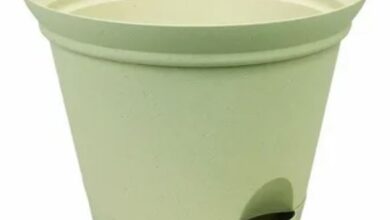Mastering the Art of Apartment Property Inspection: Your Ultimate Guide
Are you on the hunt for the perfect apartment? Or maybe you’re a landlord looking to ensure your property is in top-notch condition. Either way, you’re in the right place! Today, we’re diving deep into the world of apartment property inspection. This often-overlooked process can make or break your living experience or investment. So, let’s roll up our sleeves and get into the nitty-gritty of what makes a thorough apartment inspection.
Why Bother with an Apartment Property Inspection?
Before we jump into the how-to’s, let’s talk about why an apartment property inspection is so crucial. Whether you’re a potential tenant or a property owner, here’s why you shouldn’t skip this step:
- Safety First: An inspection can uncover potential hazards before they become dangerous.
- Money Saver: Identifying issues early can prevent costly repairs down the line.
- Peace of Mind: Knowing the exact condition of the property helps you make informed decisions.
- Legal Protection: Documenting the property’s condition can protect both tenants and landlords in case of disputes.
Now that we’ve established the importance, let’s dive into the essentials of conducting a thorough apartment inspection.
The Exterior: First Impressions Matter
The Building’s Facade
Start your apartment property inspection from the outside. Look for:
- Cracks or damage to the building’s exterior
- Signs of water damage or mold
- Condition of the roof (if visible)
- State of the windows and doors
The Surrounding Area
Don’t forget to check out:
- Parking areas
- Landscaping
- Common areas like courtyards or playgrounds
- Security features (gates, lighting, etc.)
Remember, the exterior can give you clues about how well the property is maintained overall.
Interior Inspection: The Heart of the Matter
This is where the real detective work begins. Let’s break it down room by room.
Living Areas
Walls and Ceilings
- Look for cracks, water stains, or peeling paint
- Check the condition of any wallpaper
- Ensure there are no signs of mold or mildew
Floors
- Examine for any damage, stains, or excessive wear
- If carpeted, check for odors or signs of pests
- For hardwood, look for scratches, water damage, or loose boards
Windows and Doors
- Test all windows and doors to ensure they open, close, and lock properly
- Check for drafts or signs of water infiltration
- Inspect the condition of screens and window treatments
Kitchen: The Heart of the Home
- Test all appliances (if included)
- Check under the sink for signs of leaks or water damage
- Inspect countertops and cabinets for damage or excessive wear
- Ensure proper ventilation (range hood, exhaust fan)
Bathrooms: Where the Details Matter
- Check for proper ventilation to prevent mold growth
- Test all fixtures (toilet, sink, shower/bathtub)
- Look for signs of water damage around fixtures and on the floor
- Inspect tile grout and caulking for cracks or mold
Bedrooms: Your Personal Retreat
- Ensure adequate closet space and functionality
- Check electrical outlets and light fixtures
- Inspect windows for proper function and security
Storage Areas
Don’t overlook these often-forgotten spaces:
- Check for signs of pests or water damage
- Ensure proper lighting and ventilation
- Look for any potential safety hazards
Systems and Utilities: The Invisible Essentials
Electrical System
- Test all outlets and switches
- Check the condition of the electrical panel
- Look for any exposed wiring or outdated components
Plumbing
- Check water pressure in all fixtures
- Look for signs of leaks or water damage
- Ensure proper drainage in sinks and tubs
HVAC (Heating, Ventilation, and Air Conditioning)
- Test both heating and cooling systems
- Check for unusual noises or odors
- Inspect visible ductwork for damage or dust accumulation
Safety Features
Don’t forget to check:
- Smoke detectors and carbon monoxide detectors
- Fire extinguishers
- Emergency exits
The Nitty-Gritty: What to Bring and How to Prepare
To make your apartment property inspection as thorough as possible, come prepared with:
- A checklist: This helps ensure you don’t miss anything important.
- A camera or smartphone: Document any issues you find with photos.
- A flashlight: For examining dark corners and closets.
- A outlet tester: A simple tool to check if outlets are properly wired.
- A tape measure: Useful for measuring rooms or checking clearances.
Timing is Everything: When to Inspect
The best time for an apartment property inspection is during daylight hours. This allows you to:
- See natural light in the apartment
- Spot any exterior issues more easily
- Test both heating and cooling systems (if possible)
If you’re a tenant, try to schedule the inspection before signing the lease. For landlords, regular inspections (with proper notice to tenants) can help catch issues early.
The Art of Documentation
Whether you’re a tenant or a landlord, thorough documentation is key. Here’s how to do it right:
- Use a standardized form: This ensures consistency across inspections.
- Be specific: Instead of “damage in bathroom,” write “3-inch crack in bathroom tile near shower.”
- Take plenty of photos: They say a picture is worth a thousand words, and in this case, it might be worth thousands of dollars in avoided disputes.
- Date everything: Know exactly when each observation was made.
- Get signatures: Both parties should sign off on the inspection report.
Red Flags: When to Walk Away
While minor issues can often be resolved, some red flags during an apartment property inspection might indicate bigger problems:
- Extensive water damage or mold
- Signs of pest infestation
- Structural issues like large cracks or sloping floors
- Outdated or dangerous electrical systems
- Strong, persistent odors (could indicate mold or other issues)
- Numerous code violations
If you encounter these issues, it might be best to consider other options or negotiate significant repairs before moving forward.
Beyond the Basics: Environmental Concerns
In today’s world, it’s important to consider environmental factors during your inspection:
Air Quality
- Check for proper ventilation in all rooms
- Be aware of any unusual odors that might indicate mold or other issues
- Consider testing for radon, especially in basement or ground-floor apartments
Water Quality
- If possible, test the water for contaminants
- Check for signs of lead pipes in older buildings
Energy Efficiency
- Look for energy-efficient appliances and fixtures
- Check the condition of insulation around windows and doors
- Ask about the building’s overall energy rating, if available
The Legal Side: Know Your Rights and Responsibilities
Understanding the legal aspects of apartment inspections is crucial:
For Tenants
- Know your right to a habitable living space
- Understand what maintenance issues are your responsibility versus the landlord’s
- Be aware of local laws regarding security deposits and damage claims
For Landlords
- Familiarize yourself with local housing codes and regulations
- Understand your obligations for maintaining the property
- Know the proper procedures for entering occupied units for inspections
Technology: Your Inspection Ally
In this digital age, leverage technology to enhance your inspection process:
- Use apps designed for property inspections to streamline your checklist
- Consider thermal imaging cameras to detect hidden water leaks or insulation issues
- Utilize digital floor plan tools to accurately measure and map the space
The Human Element: Communication is Key
Remember, an apartment property inspection isn’t just about ticking boxes. It’s an opportunity for open communication:
- For tenants, don’t be afraid to ask questions about the property’s history or maintenance schedule
- For landlords, use this time to set expectations and build a positive relationship with your tenants
- Be open and honest about any issues discovered during the inspection
After the Inspection: Next Steps
Once you’ve completed your thorough apartment property inspection, what’s next?
For Tenants
- Review your notes and photos carefully
- Discuss any concerns with the landlord or property manager
- Get agreements about repairs or improvements in writing
- Consider negotiating rent or lease terms based on the inspection findings
For Landlords
- Prioritize necessary repairs and maintenance
- Create a timeline for addressing any issues
- Communicate clearly with tenants about plans for improvements
- Use inspection findings to inform future property management decisions
Conclusion: Your Key to a Better Living Experience
A thorough apartment property inspection is more than just a formality—it’s your key to a better living experience or a more successful investment. By taking the time to carefully examine every aspect of the property, you’re setting yourself up for success, whether you’re moving in or renting out.
Remember, the goal isn’t to find a perfect property (because let’s face it, no place is 100% perfect), but to enter into your tenancy or property management with open eyes and full awareness. This knowledge empowers you to make informed decisions, protect your interests, and ensure a safe and comfortable living environment.
So, the next time you’re faced with an apartment inspection, don’t rush through it. Take your time, be thorough, and use this guide to help you navigate the process like a pro. Happy inspecting!


